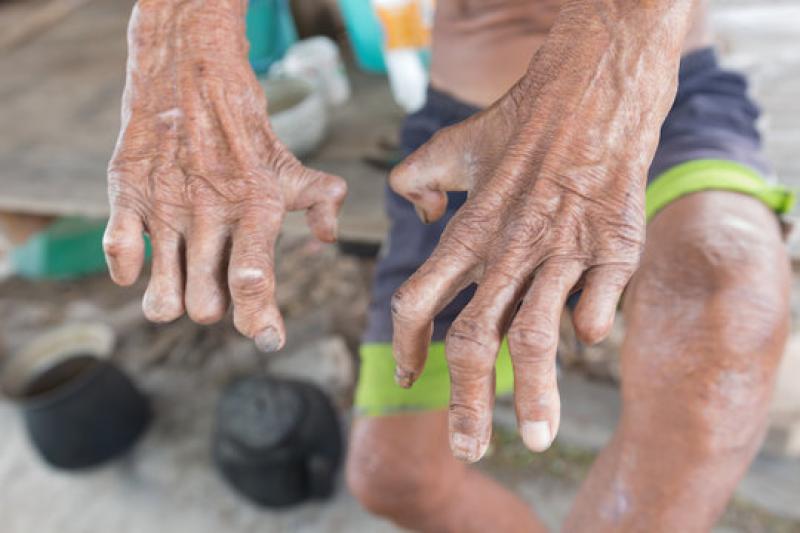Leprosy, also known as Hansen’s disease, is a chronic infectious condition caused by Mycobacterium leprae. It primarily affects the skin, peripheral nerves, mucosal surfaces of the upper respiratory tract, and eyes. Historically, leprosy carried significant stigma due to misconceptions and visible deformities in untreated cases. However, with modern medical advancements, its diagnosis and treatment have seen remarkable progress. This article delves into the multidimensional aspects of leprosy treatment, covering breakthroughs in therapeutic regimens, patient care approaches, and dynamics affecting the availability of modern solutions.
Latest Multidrug Therapy Approaches Revolutionizing Leprosy Treatment
Multidrug therapy (MDT) remains the cornerstone of leprosy management, endorsed globally since the early 1980s. The regimen typically involves a combination of dapsone, rifampicin, and clofazimine, tailored for either paucibacillary or multibacillary forms of the disease. This combination significantly reduces the bacterium’s load, curbs transmission, and prevents long-term disabilities. Innovations in MDT protocols now focus on optimizing drug dosages, reducing treatment duration, and managing adverse reactions to improve patient compliance.
Recent clinical trials have explored adjunct therapies that complement MDT, aiming to expedite nerve regeneration and alleviate inflammation. Steroids and immunomodulatory agents are gaining traction for managing type 1 and type 2 lepra reactions, which complicate the treatment process. Furthermore, researchers are investigating novel antibiotics with potent antimycobacterial effects that potentially shorten therapy duration while minimizing side effects.
Diagnostic Technologies Enhancing Early Detection and Treatment Outcomes
The effectiveness of Leprosy Treatment heavily depends on early diagnosis, which is critical to preventing irreversible nerve damage and deformities. Advances in diagnostic techniques are enabling healthcare providers to identify leprosy at nascent stages with greater precision. Polymerase Chain Reaction (PCR)-based assays have enhanced sensitivity and specificity for detecting M. leprae DNA in clinical samples, boosting diagnostic confidence especially in paucibacillary cases where bacilli are scarce.
Additionally, the utilization of serological biomarkers is improving disease surveillance and monitoring treatment response. Innovative point-of-care tests allow quicker diagnosis in remote and underserved regions where leprosy prevalence is higher. These technological strides lead to timely initiation of appropriate treatment regimens, ultimately improving long-term prognosis and reducing community transmission.
Patient-Centered Care Models Facilitating Treatment Adherence and Social Reintegration
Leprosy treatment extends beyond pharmacological intervention as psychosocial aspects play a crucial role in patient recovery. Stigma and discrimination often discourage affected individuals from seeking treatment or adhering to prescribed therapy. Progressive care models now integrate counseling, community engagement, and rehabilitation services, creating a holistic environment conducive to healing.
Health systems are incorporating trained community health workers and peer support networks that foster trust and encourage patients to complete lengthy multidrug therapy courses. Education campaigns aim to dispel myths and promote awareness about leprosy’s curability. Moreover, reconstructive surgeries and physiotherapy are accessible for patients with deformities to restore functional ability and improve quality of life. This multidisciplinary approach significantly minimizes treatment dropout rates and enhances overall treatment success.
Pharmaceutical Trends Influencing Availability and Affordability of Leprosy Medications
The pharmaceutical landscape pertaining to leprosy treatment has evolved with increased focus on drug accessibility in under-resourced settings. Generic formulations of MDT drugs dominate, lowering costs and ensuring widespread availability through global health initiatives. However, limited commercial incentives have restrained innovation in developing new anti-leprosy agents, leaving a gap in therapeutic options.
Analyzing the pharmaceutical supply chain highlight challenges such as fluctuating raw material prices, regulatory hurdles, and distribution inefficiencies impacting drug affordability. Concurrently, collaborations between public health organizations and manufacturers seek to maintain uninterrupted MDT supply and expand production capacity. Emerging trends also emphasize public-private partnerships aimed at fostering drug research and enhancing patient logistics for rural areas, signaling a positive shift toward sustainable treatment ecosystems.
Get This Report in Japanese Language -ハンセン病治療市場
Get This Report in Korean Language -나병 치료 시장
Read More Articles Related to this Industry –
Nanofiber Applications in Medical Devices: Revolutionizing Healthcare
Camera Modules in Medical Devices: Revolutionizing Diagnostics and Treatment
About Author:
Priya Pandey is a dynamic and passionate editor with over three years of expertise in content editing and proofreading. Holding a bachelor's degree in biotechnology, Priya has a knack for making the content engaging. Her diverse portfolio includes editing documents across different industries, including food and beverages, information and technology, healthcare, chemical and materials, etc. Priya's meticulous attention to detail and commitment to excellence make her an invaluable asset in the world of content creation and refinement.
(LinkedIn- https://www.linkedin.com/in/priya-pandey-8417a8173/)
